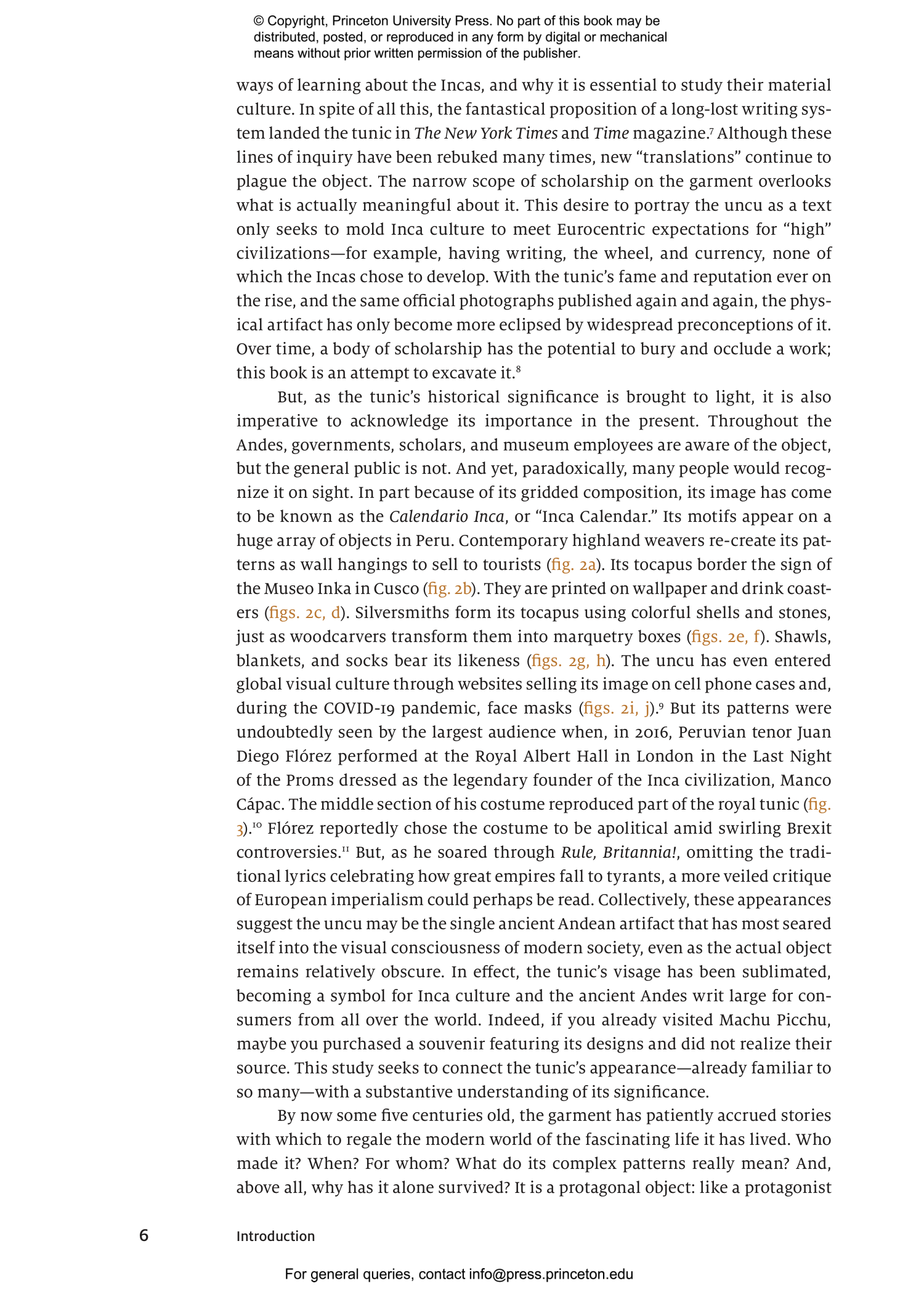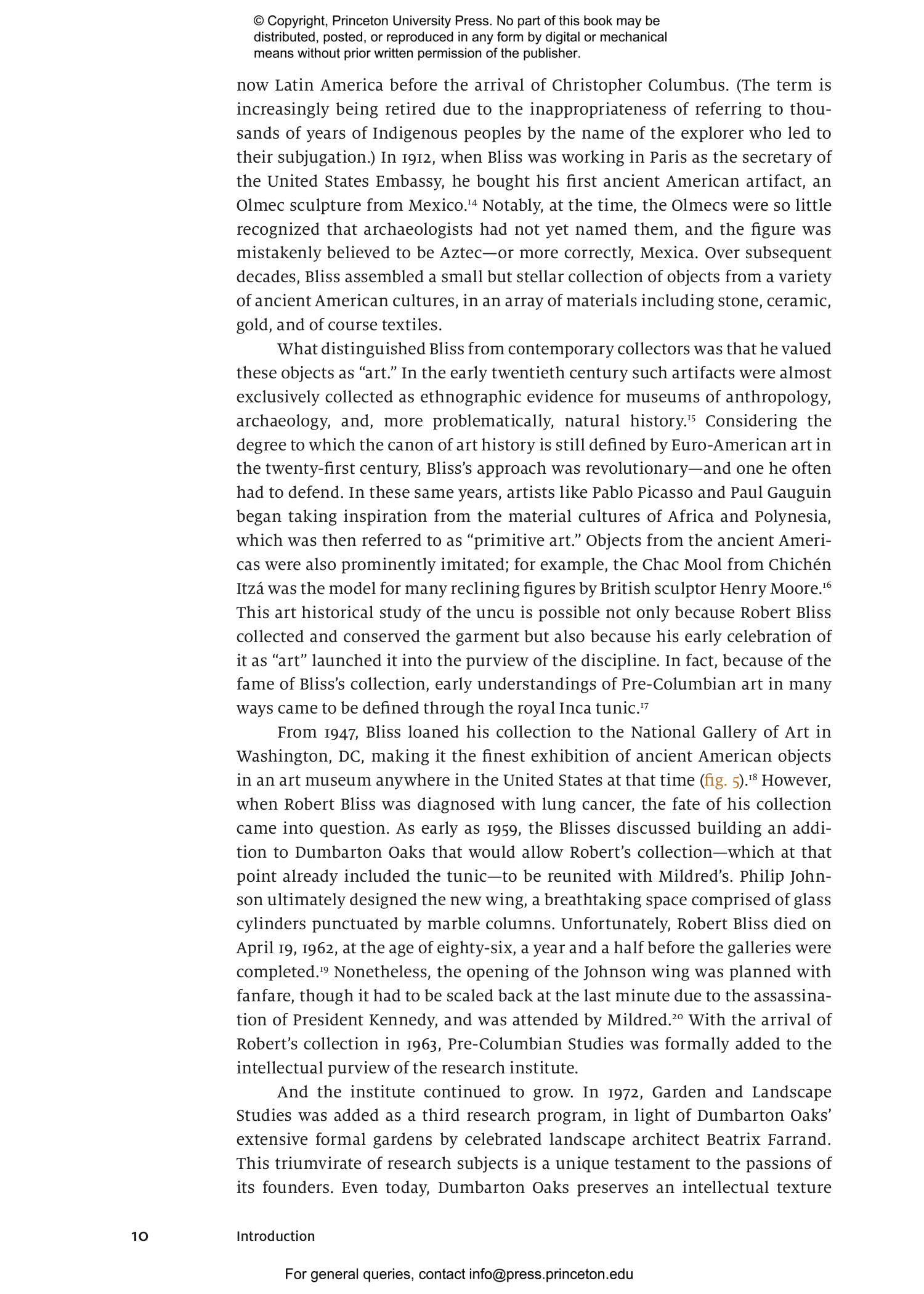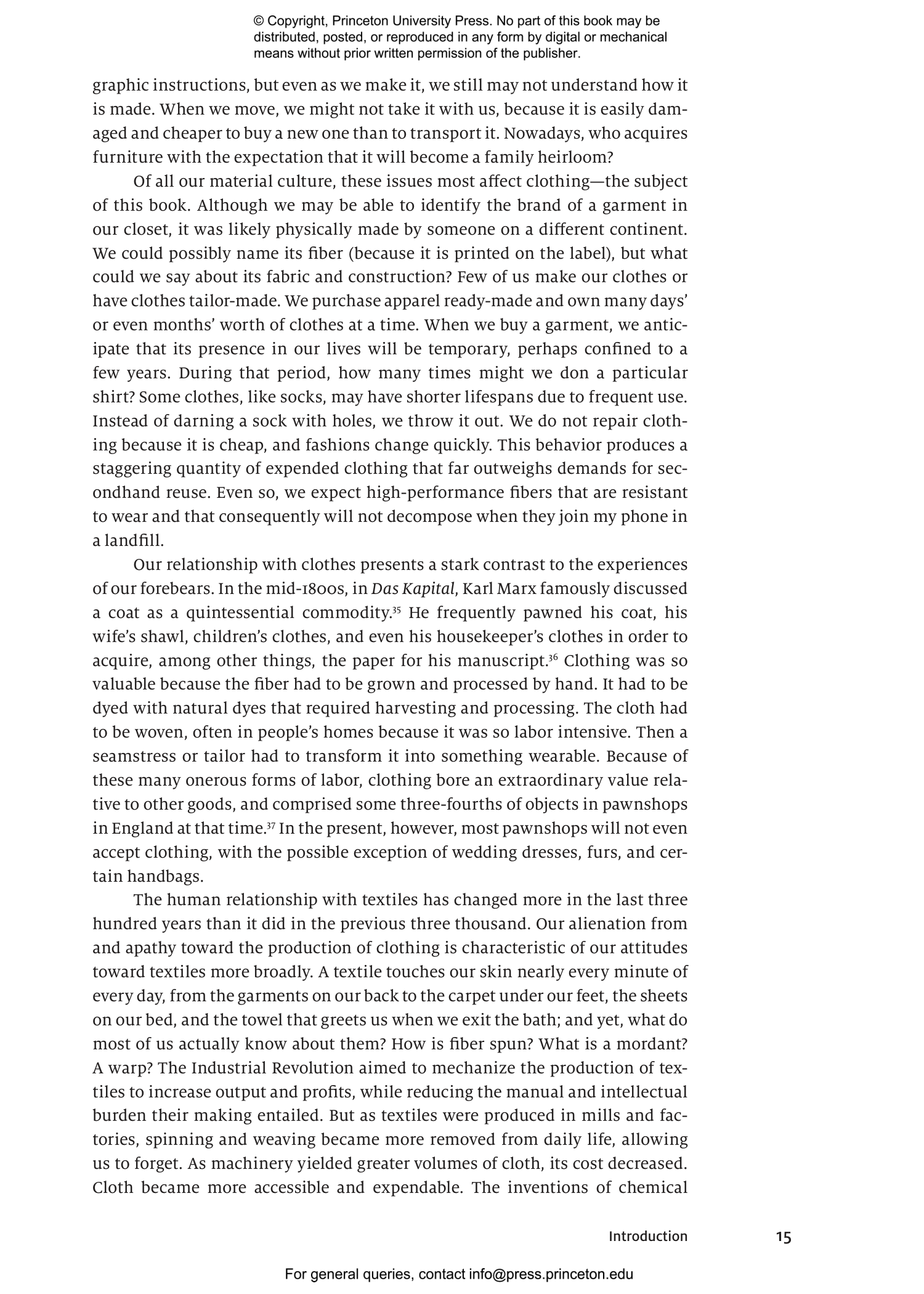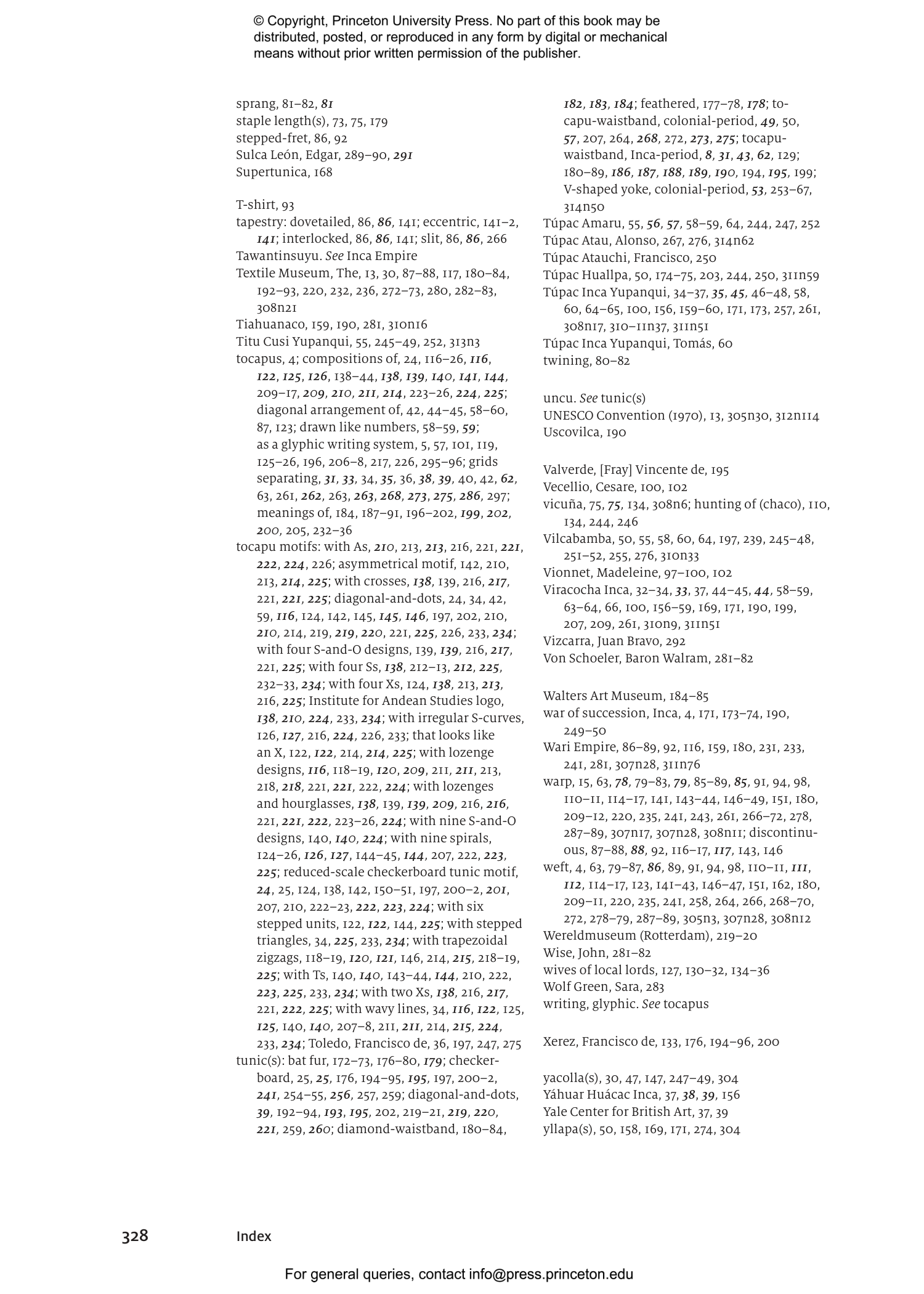The most celebrated Andean artwork in the world is a five-hundred-year-old Inca tunic made famous through theories about the meanings of its intricate designs, including attempts to read them as a long-lost writing system. But very little is really known about it. The Royal Inca Tunic reconstructs the history of this enigmatic object, presenting significant new findings about its manufacture and symbolism in Inca visual culture.
Andrew James Hamilton draws on meticulous physical examinations of the garment conducted over a decade, wide-ranging studies of colonial Peruvian manuscripts, and groundbreaking research into the tunic’s provenance. He methodically builds a case for the textile having been woven by two women who belonged to the very highest echelon of Inca artists for the last emperor of the Inca Empire on the eve of the Spanish invasion in 1532. Hamilton reveals for the first time that this imperial vestment remains unfinished and has suffered massive dye fading that transforms its appearance today, and he proposes a bold new conception of what this radiant masterpiece originally looked like.
Featuring stunning photography of the tunic and Hamilton’s own beautiful illustrations, The Royal Inca Tunic demonstrates why this object holds an important place in the canon of art history as a deft creation by Indigenous women artists, a reminder of the horrors of colonialism, and an emblem of contemporary Andean identity.
Andrew James Hamilton is associate curator of Arts of the Americas at the Art Institute of Chicago and a lecturer in the Department of Art History at the University of Chicago. He is the author and illustrator of Scale & the Incas (Princeton).
"Andrew James Hamilton carries out a meticulous examination of the 500-year old imperial tunic, considered “the most celebrated Andean artwork in the world”, putting the case for its creation by two female artists on the eve of the devastating Spanish invasion."—Jacqueline Riding, The Art Newspaper
"As thrilling as a murder mystery, a visual feast that kept me engaged till the last page. . . . Hamilton has provided an example of how thrilling art history and archaeological writing can be."—Bill Sillar, 21: Inquiries into Art, History, and the Visual
"Hamilton brings an impressive grasp of material processes and an ability to evoke haptic sensibilities to the understanding of objects of material culture. . . . Hamilton’s wide-ranging investigation of the tunic’s manufacture reads with the verve of a detective novel and leads to a series of plausible and intriguing histories. His astute perceptions and detailed observations generate rich inferences as to the how and whom of the garment."—Choice
"This extensive analysis of the textile, the methods, the time of making and the underlying meaning sets a new standard for understanding this relic of a lost empire."—Michael F. Rohde, HALI Magazine
“This beautifully written book is full of clever deductions resulting from years spent researching this extraordinary textile. The Royal Inca Tunic is a significant scholarly contribution.”—Ann P. Rowe, author of Costumes and Featherwork of the Lords of Chimor: Textiles from Peru’s North Coast
“Focusing on one of the best-known works of art from the Incas, Hamilton teaches us about the goals of art history, the critical aspects of textile production, and Inca culture with praiseworthy clarity. The Royal Inca Tunic is outstanding.”—Brian S. Bauer, author of Ancient Cuzco: Heartland of the Inca
“A revelatory book that weaves together wondrous stories of the Incas and their ancestors through their exquisite material creations.”—Jago Cooper, coeditor of Peru: A Journey in Time
“This is how you do it! [The Royal Inca Tunic is an] inspired and inspiring book about a very special, and until now scantly understood Inca tunic. Pathbreaking.”—Ilona Katzew, author of Contested Visions in the Spanish Colonial World



























